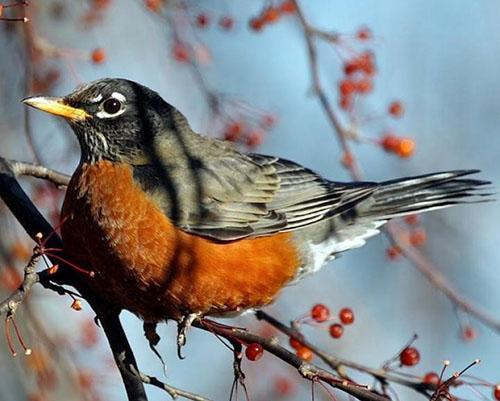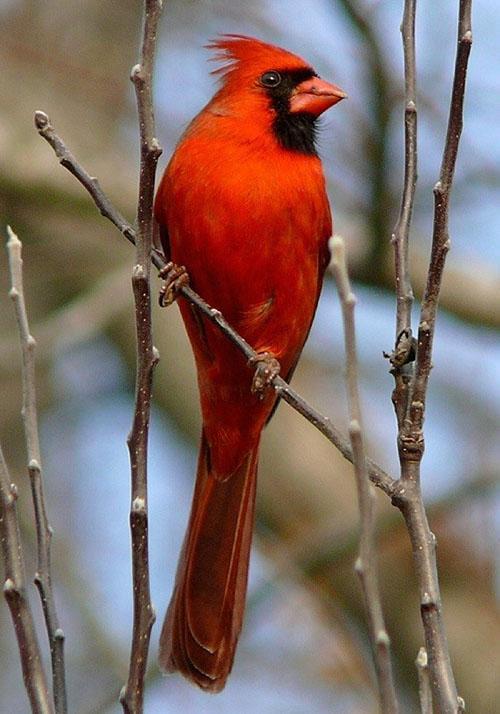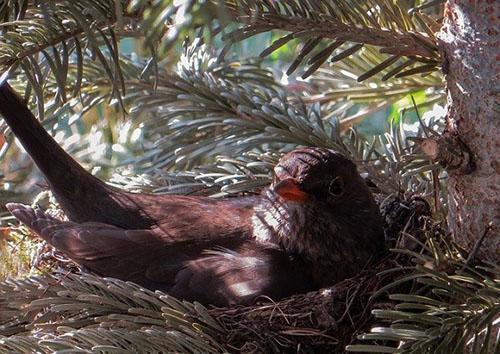Birds in the garden
 In this article, you will find some tips to help make your site more attractive to birds. Unfortunately, it is not enough to put one or two feeders. Small birds are constantly eating something during the day, so they need to be able to find food 365 days a year.
In this article, you will find some tips to help make your site more attractive to birds. Unfortunately, it is not enough to put one or two feeders. Small birds are constantly eating something during the day, so they need to be able to find food 365 days a year.
What are birds in the garden for?

Birds are of great benefit to us. One swallow can eat hundreds of insects in the afternoon. By attracting insectivorous birds to our garden, we reduce the number of pests that attack both plants and ourselves.
Bird Attraction Tips
See the garden through the eyes of our feathered friends. Here are 5 tips to help you:
- Along with natural foods such as seeds, fruits, berries or nectar, your garden also offers an abundance of delicious insects, caterpillars, worms and spiders. The more varied your plantings, the more bird species you will attract.
- In addition to ready food supplies and clean water, birds need places to hide and build nests. Pine and dense coniferous trees save from gusts of wind and rain in bad weather. They also provide reliable protection from predators and are ideal nesting sites in spring.

- Speaking of the best trees for birds, we should mention oak, cedar, birch, maple, bird cherry and irga. Together with insects, seeds and fruits, they provide birds with safe shelter and nesting places. Decorative planting of wild apple and cherry trees, mulberry, holly and mountain ash will attract flocks of birds with their flowers and berries.

- The native shrub species are especially attractive, providing the birds in your region with suitable food. They create an extra layer of cover under taller trees.
- There are a large number of perennials and annuals on which birds are comfortable to settle. It is important that their seeds are easily accessible to birds. Plantings with full blooming flowers and buds growing on upright stems are rich in seeds that are easy for birds to reach.
Bird care
Once the birds have settled in your garden, be attentive to their needs. Eliminate the risk of exposure to fertilizers and household chemicals.
 You may need to postpone pruning if the robin family decides to nest among the forsythia branches. Instead of diligently collecting all the fallen flowers, allow the birds to feast on their seeds. Keep your yard a little wild, but there will be plenty of bird hiding places. Do not cut down old trees until they pose a danger to people and buildings. Cavities in these trees serve as homes for some birds and are also rich in nutritious insects and larvae.
You may need to postpone pruning if the robin family decides to nest among the forsythia branches. Instead of diligently collecting all the fallen flowers, allow the birds to feast on their seeds. Keep your yard a little wild, but there will be plenty of bird hiding places. Do not cut down old trees until they pose a danger to people and buildings. Cavities in these trees serve as homes for some birds and are also rich in nutritious insects and larvae.
Your efforts will be rewarded a hundredfold as birds protect against bugs, garden pests and mosquitoes. By planting a different food source each season, you will ensure your feathered friends are on site year-round and see successful gardening and poultry going hand in hand.
How to predict weather by bird behavior
 Did you know that bird behavior can help predict the weather? Take a closer look and you'll be surprised at what you find. There are some folk signs on this topic.
Did you know that bird behavior can help predict the weather? Take a closer look and you'll be surprised at what you find. There are some folk signs on this topic.
For example, if the birds are high in the sky, this indicates clear weather:
- hawks flying high to the clear sky;
- when they fly low, expect a thunderstorm.
As a rule, if a storm is approaching, the birds stop flying and hide in shelters. They will also hover low to avoid the discomfort of falling air pressure:
- when seagulls fly inland, expect a thunderstorm;
- when birds take refuge in the daytime, expect rain;
- petrels lurking under the stern of the ship indicate bad weather.
 Before a big storm, birds are usually not heard. If you have ever walked through the woods before a thunderstorm, then you have felt this oppressive silence. When the birds start singing in the rain, the weather will soon improve.
Before a big storm, birds are usually not heard. If you have ever walked through the woods before a thunderstorm, then you have felt this oppressive silence. When the birds start singing in the rain, the weather will soon improve.
 Here are a few more popular signs:
Here are a few more popular signs:
- if the crows fly in pairs, expect good weather, a lonely crow is a sign of bad weather;
- the whiteness of the goose brisket indicates the severity of winter: the brighter the dark red spots on it, the angrier the cold will be;
- if the partridges cackle loudly in the fall, this indicates a mild winter;
- when domestic geese move east and then fly west, this indicates an approaching cold;
- when the swallow's nest is high, the summer will be very dry, however, if it has settled low, then you can safely reap and sow.
People should learn a lot from animals. Their intuition is much more developed, and their habits often speak better than any weather report.